It looks like you're using an Ad Blocker.
Please white-list or disable AboveTopSecret.com in your ad-blocking tool.
Thank you.
Some features of ATS will be disabled while you continue to use an ad-blocker.
share:
originally posted by: AdmireTheDistance
a reply to: Marduk
I have a hard time imagining you ever believing the fringe crap lol.
I read Sitchin when I was 12. Back when I used to believe something because it was in print
a reply to: Marduk
You look at the pyramid as a pile of stones, I see an exquisite work of ancient engineering. You see rubble, I see it in my minds eye how it once was.
There is no doubt in my mind that when the whole site was finally completed in all it's glory it was truly breathtaking and earned it's rightful standing as a Wonder of the World.
Night
You look at the pyramid as a pile of stones, I see an exquisite work of ancient engineering. You see rubble, I see it in my minds eye how it once was.
There is no doubt in my mind that when the whole site was finally completed in all it's glory it was truly breathtaking and earned it's rightful standing as a Wonder of the World.
Night
originally posted by: Marduk
........ but anyone who spends about ten minutes reading about how radiocarbon dating works, soon sees that they're talking crap in order to sell their books to the gullible.
Making friends and influencing people, I see.
Any one who spends 10 minutes reading about how radiocarbon dating works, soon sees a problem.
As much as we would like to envision, there are areas of Science, that are researching and studying "conditions" that would/could suggest the sort of environment we currently live with, has not always been as it is looking out our window today.
The Radiocarbon Dating method currently utilized, measures, and is based, on the norms which we have today, under the assumption the Planet had always been as it is today.
Now, to the credit of those who invented this tool, I would completely agree with dating in this method alone going back 10000 years, give or take, but we can not assume what we have today has always been the case.
This was why I asked you about dating methods that determined a timeline in another topic recently, and which you responded with clarification that outlined the other tools used to affix a date.
Just thought this should be clarified a little my friend.
Ciao
Shane
originally posted by: Shane
My question becomes, why is it difficult to accept man may not have build Puma Pumku, or the Great Pyramid?
Psy ops detected
In short if you believe your intelligence is constructed & based on stable foundation. YOU WILL ANSWER THIS CLEVER QUESTION. Correctly.
Shane thanks for presenting
In response to your question they don't like to accept truths that don't fit their standard scientific models- beliefs? 1 is NOT saying they have not found truth in some science models. What 1 is saying is... Since their minds are somewhat egotistical about certain EA*RTH based education credentials they cannot see truth right in their presence blocked. And so they disbelieve and denounce any NU input related to human & alien interactions, which is actually old or Ancient input outside standard scientific models they follow, in group thinks...
My response is THEY ARE HERE BEEN HERE. Good psy op especially if un-intentional
NAMASTE*******
originally posted by: SLAYER69
Let's see what I wrote....
"I don't have a dog in this fight but. You and I both know the smooth tightly fitting outer casing stones were stripped away centuries ago leaving us with the exposed blocks weathered and worn. Nowhere near what a marvel of Ancient Engineering it once was in it's original condition.
It's disingenuous to imply otherwise. "
I don't think it is perhaps the "marvel" of aesthetics that it once was, but it remains a very clear demonstration of their fetes of engineering. A little worn around the edges, but largely structurally, retaining it's integrity. Limestone erodes rapidly, particularly in scouring winds, and it would have needed regular redressing, just as the great cathedrals of Europe, built of limestone, do. It's not the best, most enduring of building materials, but for that gleaming white look when the sun hits it, nothing is prettier. That high quality limestone had to be mined, another fete of engineering.
In it's "original condition", sure, it looked pretty, but it is no more, or less, an enduring example of the Ancient Egyptians skill and expertise of stone masonry, tool making, stone extraction and construction engineering, though then it would have embodied the three pillars of strength, beauty and wisdom more visually, by virtue of the two it still retains the whole.
originally posted by: Shane
Any one who spends 10 minutes reading about how radiocarbon dating works, soon sees a problem.
As much as we would like to envision, there are areas of Science, that are researching and studying "conditions" that would/could suggest the sort of environment we currently live with, has not always been as it is looking out our window today.
The Radiocarbon Dating method currently utilized, measures, and is based, on the norms which we have today, under the assumption the Planet had always been as it is today.
No it isn't at all based on conditions today
That is why I suggested you spend ten minutes actually studying it, rather than what you have appeared to do, swallow a load of rubbish hook line and sinker from a fringe liar
Carbon dating is calibrated by a method using Pinus aristata, precisely because it records what the climate and environment was like going back thousands of years
I also suspect that you've been told that the amount of carbon 14 being emitted from the sample can be affected. It cannot and that hasn't been the case since the 1950s when the practice was in its infancy
Now go and spend that ten minutes and you'll find out why you are wrong
originally posted by: Ophiuchus 13
In response to your question they don't like to accept truths that don't fit their standard scientific models- *
Its nothing to do with truth and everything to do with evidence, of which you have none, not a single piece of quantifiable evidence of visitation, you make a lot of claims, but you are never able to back them up.
You are basically saying that your ancestors were idiots,
Did you think the OP, which you are congratulating shane on shows an Alien, when in fact, its been proven right here to be a lotus flower. How does that sit with you, to see your best evidence shown to be mundane...
originally posted by: Marduk
Its nothing to do with truth and everything to do with evidence, of which you have none, not a single piece of quantifiable evidence of visitation, you make a lot of claims, but you are never able to back them up.

No evidence, fair enough. If 1 said ISHTAR / INNANA, I guess your science denounces any relevance, correct?
edit on 2/7/16 by Ophiuchus 13
because: (no reason given)
I have forgotten more about Inanna than you've ever known, but what's your point ?
originally posted by: Ophiuchus 13
No evidence, fair enough. If 1 said ISHTAR / INNANA, I guess your science denounces any relevance, correct?
I note you can't even spell her name right...
There you did it again, you made a claim without any evidence at all, I'm not here playing semantical games with you, if you have evidence present it, or stop wasting everyones time.
But seeing as your lotus flower Alien was the best you had, what's next, the Abydos helicopter ?
lol
originally posted by: SLAYER69
I don't have a dog in this fight but. You and I both know the smooth tightly fitting outer casing stones were stripped away centuries ago leaving us with the exposed blocks weathered and worn. Nowhere near what a marvel of Ancient Engineering it once was in it's original condition.
It's disingenuous to imply otherwise.
Yes and Thanks for the guidance.
en.wikipedia.org...
At completion, the Great Pyramid was surfaced by white "casing stones" – slant-faced, but flat-topped, blocks of highly polished white limestone. These were carefully cut to what is approximately a face slope with a seked of 5½ palms to give the required dimensions. Visibly, all that remains is the underlying stepped core structure seen today. In AD 1303, a massive earthquake loosened many of the outer casing stones, which were then carted away by Bahri Sultan An-Nasir Nasir-ad-Din al-Hasan in 1356 to build mosques and fortresses in nearby Cairo. Many more casing stones were removed from the great pyramids by Muhammad Ali Pasha in the early 19th century to build the upper portion of his Alabaster Mosque in Cairo not far from Giza. These limestone casings can still be seen as parts of these structures. Later explorers reported massive piles of rubble at the base of the pyramids left over from the continuing collapse of the casing stones, which were subsequently cleared away during continuing excavations of the site. Nevertheless, a few of the casing stones from the lowest course can be seen to this day in situ around the base of the Great Pyramid, and display the same workmanship and precision that has been reported for centuries. Petrie also found a different orientation in the core and in the casing measuring 193 centimetres ± 25 centimetres. He suggested a redetermination of north was made after the construction of the core, but a mistake was made, and the casing was built with a different orientation.[6] Petrie related the precision of the casing stones as to being "equal to opticians' work of the present day, but on a scale of acres" and "to place such stones in exact contact would be careful work; but to do so with cement in the joints seems almost impossible".[21] It has been suggested it was the mortar (Petrie's "cement") that made this seemingly impossible task possible, providing a level bed, which enabled the masons to set the stones exactly.[22][23]
As for some of these curiousities I have asked about, and thanks to Byrd's guidance we can get these out to view.
Here we have considered, HOW? How did these heads get placed on the Shoreline. Some of the Elders suggested they walked there.
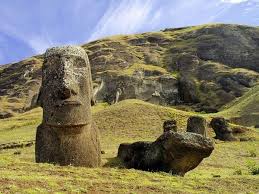
The above is what we see, but maybe those elders where right.
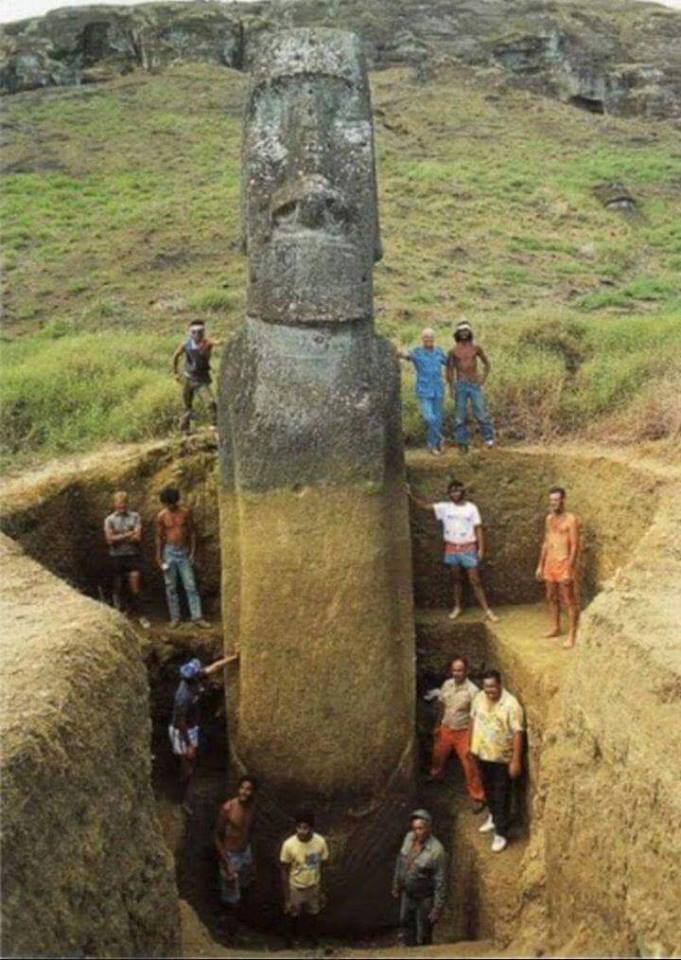
Now it was bad enough, trying to suppose the means utilized too move the heads, but thats just a 1/4 of the weight involved now. How could they get these in place?
And then there's this, in Egypt.
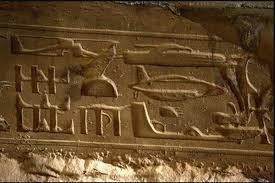
I have never seen anything that answers this, directly, apposed to suggestive maybes.
And then there this, in the new world
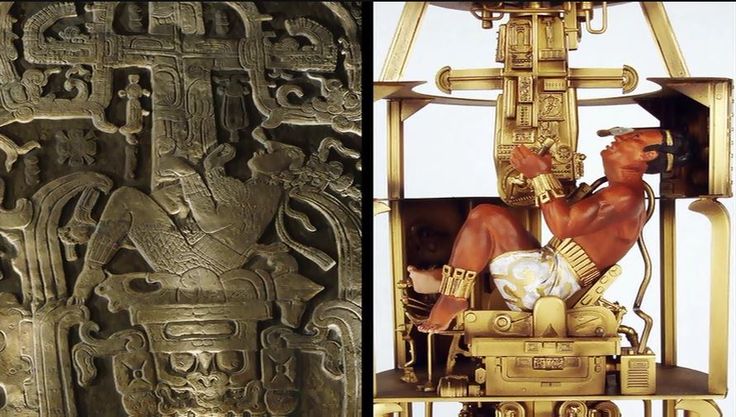
And despite what is said, it is clear, what is shown
These sorts of items, seem out of place for those which suggest our simple ancestors accomplished this alone.
Ciao
Shane
a reply to: TerryDon79
They're either trolling, or they're dead serious...Something tells me it's the latter, though, which is frightening.
They're either trolling, or they're dead serious...Something tells me it's the latter, though, which is frightening.
a reply to: AdmireTheDistance
I'm still surprised that in this day and age people are unable to do a simple web search on the "omgz proof!!!!111one!!1" pictures they see.
I can see why some people might be fooled, but come on. At least do a bit of digging before you post garbage.
I'm still surprised that in this day and age people are unable to do a simple web search on the "omgz proof!!!!111one!!1" pictures they see.
I can see why some people might be fooled, but come on. At least do a bit of digging before you post garbage.
originally posted by: Shane
These sorts of items, seem out of place for those which suggest our simple ancestors accomplished this alone.
Ciao
Shane
Oh please, All you've done there is posted some pictures of statues that aren't even 900 years old, which you can see being moved quite easily here
and shown you don't know what a palimpsest is
This is ignorance at its finest
This btw is the Mayan tree of life
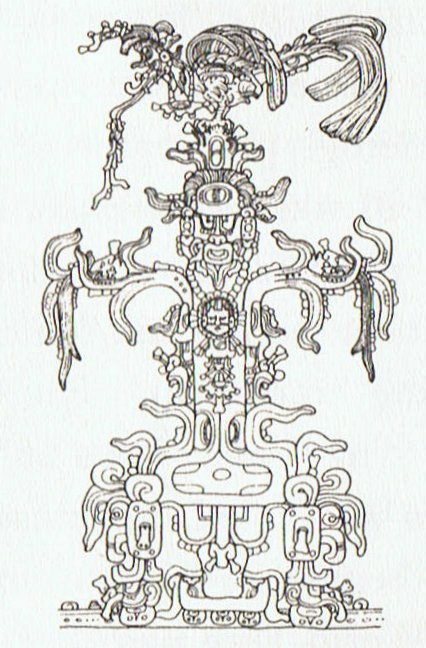
take a good long look at it, it might seem familiar to you
edit on 7-2-2016 by Marduk because: (no reason given)
edit on 7-2-2016 by Marduk because: (no reason given)
a reply to: TerryDon79
What?
Marduk asked for the Helicopter. And despite what is presented to refute this, I don't see it.
That was the high def photo offered, and there is absolutely no indications every presented that outlines what it was Seti I wished to indicate, and what Ramesses II was expressing with his new carvings on top of Seti's.
Marduk was very informative about the Flower vs Alien Face. Maybe this could be the case again.
As for King Pakal, the matter of who was even buried within the sarcophagus is still unclear, so why would uncertain assertions supercede what can be clearly seen.
I don't make this stuff up my friend. en.wikipedia.org...
As for these figures on Easter Island, and how this was accomplished, is still being debated. I would like to know. No one has indicated one way verses another. Lots of theory though. en.wikipedia.org...
Ciao
Shane
What?
Marduk asked for the Helicopter. And despite what is presented to refute this, I don't see it.
Helicopter hieroglyphs refer to a Cartouche carving from the Temple of Seti I at Abydos.
In paleocontact hypothesis circles[1] the hieroglyphics have been interpreted as an out-of-place artifact depicting a helicopter as well as other examples of modern technology. This claim is dismissed by Egyptologists who highlight this pareidolia is partly based on widely distributed retouched images that removed key details from the actual carvings. A high definition picture of the hieroglyph without digital modification is available[1]
The anomaly is the creation of a cartouche being reused by following generations. The initial carving was made during the reign of Seti I, and the stone was later reused during the period of Ramesses II with one carving being on top of the other. This palimpsest effect coupled with erosion creates the carving in situ.[2]
That was the high def photo offered, and there is absolutely no indications every presented that outlines what it was Seti I wished to indicate, and what Ramesses II was expressing with his new carvings on top of Seti's.
Marduk was very informative about the Flower vs Alien Face. Maybe this could be the case again.
As for King Pakal, the matter of who was even buried within the sarcophagus is still unclear, so why would uncertain assertions supercede what can be clearly seen.
I don't make this stuff up my friend. en.wikipedia.org...
As for these figures on Easter Island, and how this was accomplished, is still being debated. I would like to know. No one has indicated one way verses another. Lots of theory though. en.wikipedia.org...
Ciao
Shane
a reply to: Shane
...there is absolutely no indications every presented that outlines what it was Seti I wished to indicate, and what Ramesses II was expressing with his new carvings on top of Seti's.
As for King Pakal, the matter of who was even buried within the sarcophagus is still unclear...
As for these figures on Easter Island, and how this was accomplished, is still being debated.
Each of these statements is incorrect, so why do you say them as if they're fact?
a reply to: Shane
So apparently I was going off topic in my replies to this thread, I don't see it myself but I will resolve this by replying directly to the OP now.
I suppose the short answer is there no hard evidence to suggest otherwise. Is it not more likely they were built by ancient mankind than alien beings? I'm not suggesting aliens haven't visited earth, or indeed influenced humanity,
I am very much on the fence on that one. But as mind blowing and impressive as the Great Pyramid is, doesn't mean mankind was incapable of building it.
On the other hand I have yet to be made aware of valid and convincing explanation of how exactly it was done with the supposedly limited technology of the time.
So apparently I was going off topic in my replies to this thread, I don't see it myself but I will resolve this by replying directly to the OP now.
My question becomes, why is it difficult to accept man may not have build Puma Pumku, or the Great Pyramid?
I suppose the short answer is there no hard evidence to suggest otherwise. Is it not more likely they were built by ancient mankind than alien beings? I'm not suggesting aliens haven't visited earth, or indeed influenced humanity,
I am very much on the fence on that one. But as mind blowing and impressive as the Great Pyramid is, doesn't mean mankind was incapable of building it.
On the other hand I have yet to be made aware of valid and convincing explanation of how exactly it was done with the supposedly limited technology of the time.
a reply to: surfer_soul
Thank you for your remarks, and your expression of your views.
There is no hard evidence of anything that will be seen at anytime soon in this topic. That isn't the point.
It is the evidence that we have two trains of thought alone, vs more than two.
You realize something is amiss. Here's an example.
Puma Pumku and those very beautiful and impressive walls that show some extreme engineering and one of the Oldest examples of Zero Tolerance between the joints of these blocks.
Those two trains of thought, suggest mankind, with limited ability due to technological restrictions where able to design, cut, move and assemble these fitted stones, just because they where the only ones there to do it. There is no evidence anyone else did,
The implied suggestion becomes Mankind, in the days of our Ancient Ancestors where superior to us today in strength, ingenuity, and intellect. Now, we are just dumber and weaker than we once where.
OR
We ignore the peculiar work that has been left from those Glorious Days of magnificent structures and hap hazardly claim they where structures from the Native Peoples of the Region which is closed to the Status Quo seen in many South American sites.
The problem here is those same people's we suggest built these wonders, have traditions and beliefs that are contrary to that Status Quo, and frighteningly as it sounds, they ascribe that constructive achievement to entities best described as gods.
Of course, the oxymoron here is evident. We ignore the ones who we say constructed the achievement, and then rationalize some reasoning that returns those presumed constructors to little more than ignorant backwards people's who don't understand their own historical past.
There is an other alternative. Hence the discussion.
Ciao
Shane
Thank you for your remarks, and your expression of your views.
There is no hard evidence of anything that will be seen at anytime soon in this topic. That isn't the point.
It is the evidence that we have two trains of thought alone, vs more than two.
You realize something is amiss. Here's an example.
Puma Pumku and those very beautiful and impressive walls that show some extreme engineering and one of the Oldest examples of Zero Tolerance between the joints of these blocks.
Those two trains of thought, suggest mankind, with limited ability due to technological restrictions where able to design, cut, move and assemble these fitted stones, just because they where the only ones there to do it. There is no evidence anyone else did,
The implied suggestion becomes Mankind, in the days of our Ancient Ancestors where superior to us today in strength, ingenuity, and intellect. Now, we are just dumber and weaker than we once where.
OR
We ignore the peculiar work that has been left from those Glorious Days of magnificent structures and hap hazardly claim they where structures from the Native Peoples of the Region which is closed to the Status Quo seen in many South American sites.
The problem here is those same people's we suggest built these wonders, have traditions and beliefs that are contrary to that Status Quo, and frighteningly as it sounds, they ascribe that constructive achievement to entities best described as gods.
Of course, the oxymoron here is evident. We ignore the ones who we say constructed the achievement, and then rationalize some reasoning that returns those presumed constructors to little more than ignorant backwards people's who don't understand their own historical past.
There is an other alternative. Hence the discussion.
Ciao
Shane
originally posted by: AdmireTheDistance
a reply to: Shane
...there is absolutely no indications every presented that outlines what it was Seti I wished to indicate, and what Ramesses II was expressing with his new carvings on top of Seti's.
I posted what is the basis of the materials presented to date that is used to suggest my remark is accurate. Nothing but suggestive denial is presented, and that's not evidence.
As for King Pakal, the matter of who was even buried within the sarcophagus is still unclear...
Again, it is a fact that they have no clue who was in the tomb. The remains of King Pakal, are separated from the age of the King by 40 years in age. This is not a fictional account selectively created to fill space in ATS.
It is what is known to date, and what is known right now, according to various source materials general accepted for what they are, is the bones don't match the departed.
As for these figures on Easter Island, and how this was accomplished, is still being debated.
Again, I didn't suggest anything out of context in regards to the entry presented discussing various methods of presumed transport that have been attempted by us modern folk.
Regular presumed applications such as rolling them on logs and such is mute. No trees.
The walking, as Marduk presented, and the topic itself described in various alternative means of walking, leaves the subject clearly stating that despite all of these considerations presented and discussed "is still being debated", is the status of the matter at this time.
Again, it isn't a fictional account I am presenting. It's not my words. It is the position and expressions of some who dismiss the plausibility of other options being presented.
I learned here long ago, my words have little sway over facts. I have three very intelligent and respected friends, of sorts, that clearly made that point, and for whom I respect their input and clarity when they see fit to respond. Now I doubt their feelings are mutual, and so be it.
The point is, this is a discussion that is structured to bring these anomalies into a collective, that amasses some considerations of varying views for people to review, research, and learn from.
I unforgivingly have my own views, which has an acceptance of God. I won't deny that. But along with that, comes the acceptance that God isn't alone. Others have walked this earth in our past. The Lore and Legends of the Ancients clearly demonstrates this. But this goes with no inclusion when we script and construct the Mythos of these people's past.
Ciao
Shane
new topics
-
Fire insurance in LA withdrawn months ago
General Conspiracies: 45 minutes ago -
Bizarre Labour Party Tic Toc Video Becomes Even More Embarrassing
Regional Politics: 8 hours ago
top topics
-
The elephant in the room (wearing a hoodie)
US Political Madness: 16 hours ago, 14 flags -
Dr. Demento
Music: 16 hours ago, 6 flags -
Bizarre Labour Party Tic Toc Video Becomes Even More Embarrassing
Regional Politics: 8 hours ago, 4 flags -
Fire insurance in LA withdrawn months ago
General Conspiracies: 45 minutes ago, 4 flags -
Potter to WHU
World Sports: 14 hours ago, 2 flags
active topics
-
Los Angeles brush fires latest: 2 blazes threaten structures, prompt evacuations
Mainstream News • 285 • : marg6043 -
Judge rules president-elect Donald Trump must be sentenced in 'hush money' trial
US Political Madness • 84 • : Vermilion -
S.C. Jack Smith's Final Report Says Trump Leads a Major Conspiratorial Criminal Organization!.
Political Conspiracies • 47 • : Vermilion -
Fire insurance in LA withdrawn months ago
General Conspiracies • 2 • : nugget1 -
Statements of Intent from Incoming Trump Administration Members - 2025 to 2029.
2024 Elections • 61 • : cherokeetroy -
-@TH3WH17ERABB17- -Q- ---TIME TO SHOW THE WORLD--- -Part- --44--
Dissecting Disinformation • 3978 • : RelSciHistItSufi -
Gravitic Propulsion--What IF the US and China Really Have it?
General Conspiracies • 39 • : budbayview -
The elephant in the room (wearing a hoodie)
US Political Madness • 26 • : xuenchen -
Its Looking Like Schiff - Vindman - Ciaramella Conspired to Impeach President Trump.
Political Conspiracies • 188 • : WeMustCare -
Trump's idea to make Canada the 51st US state: 'Potential is massive'
Mainstream News • 155 • : DaydreamerX
